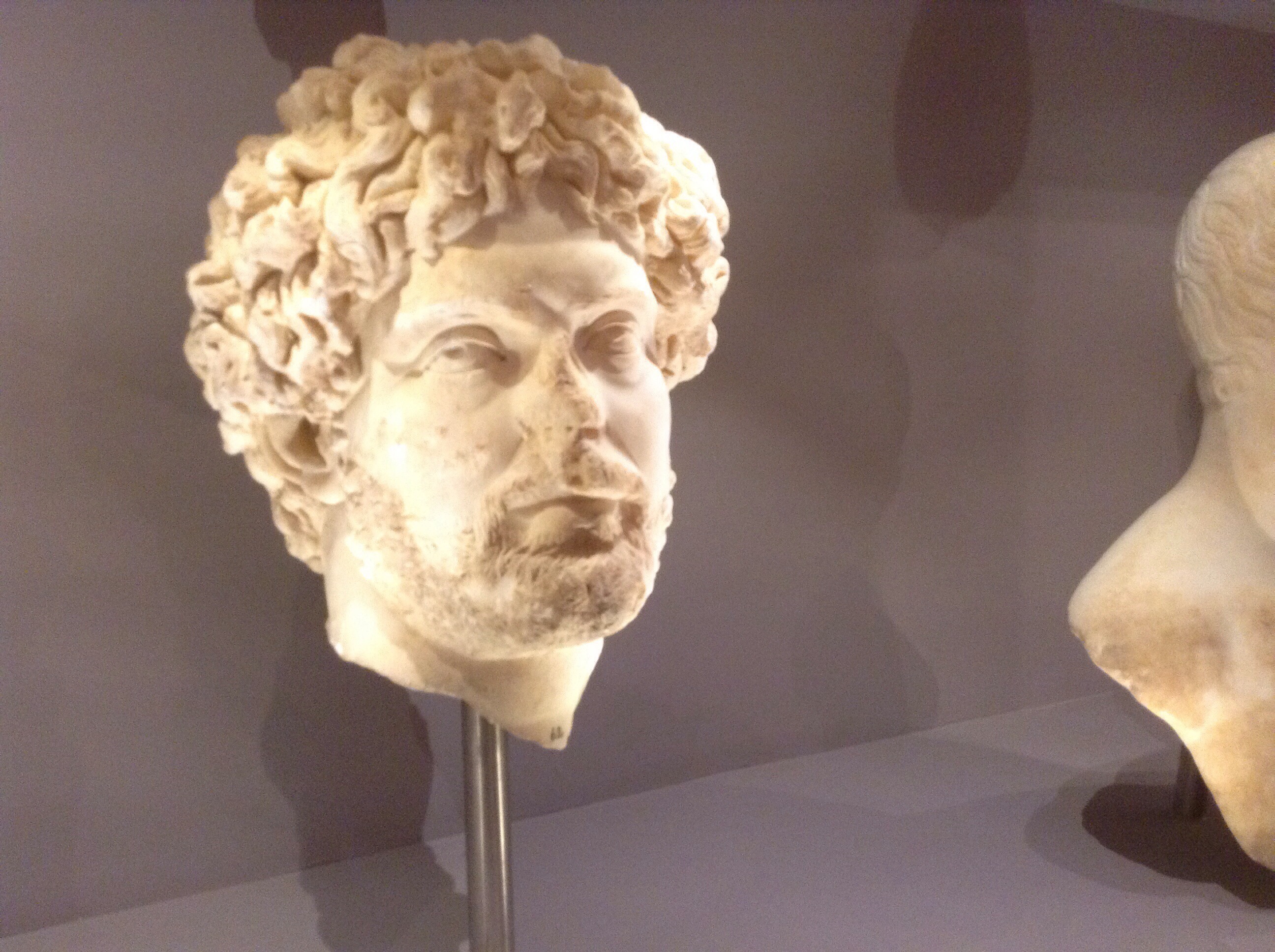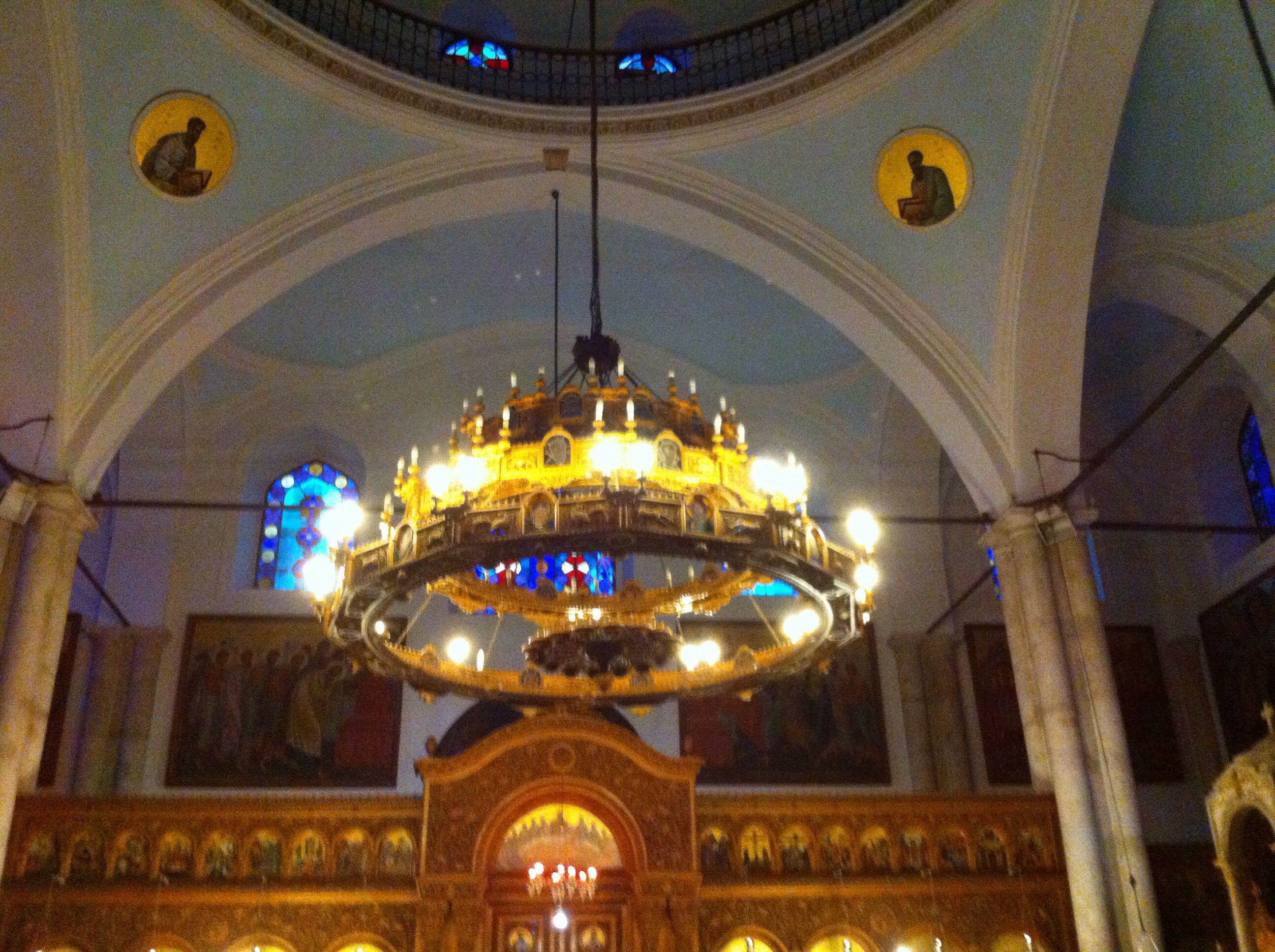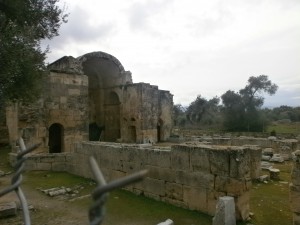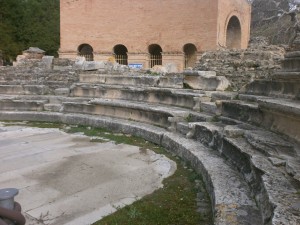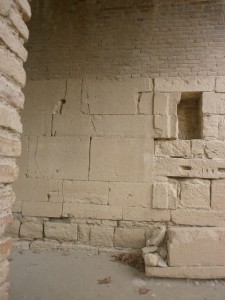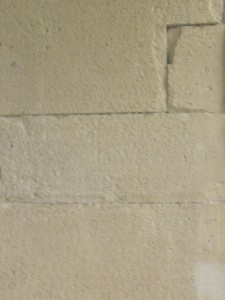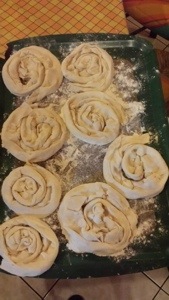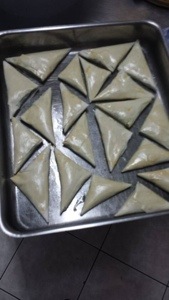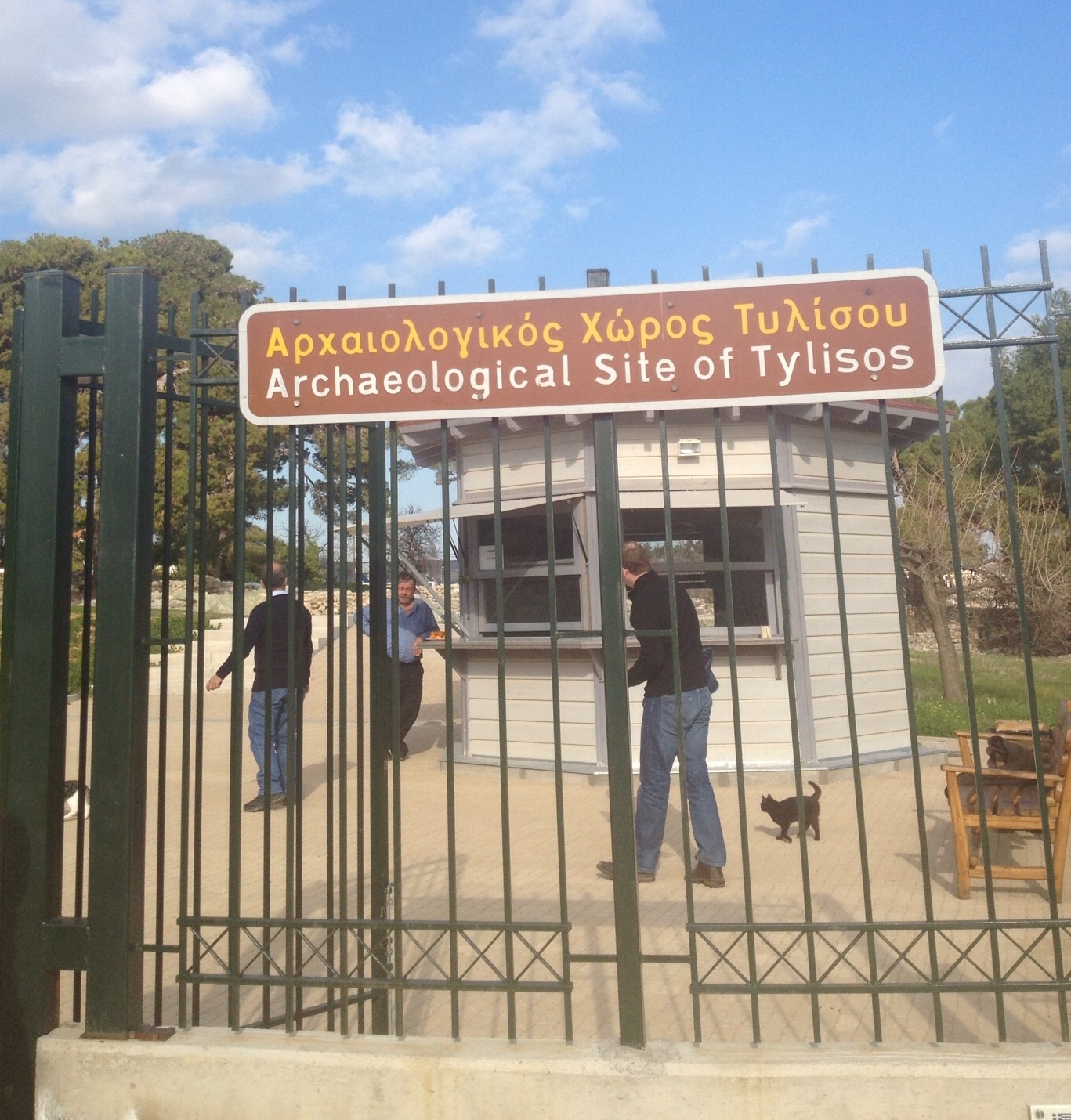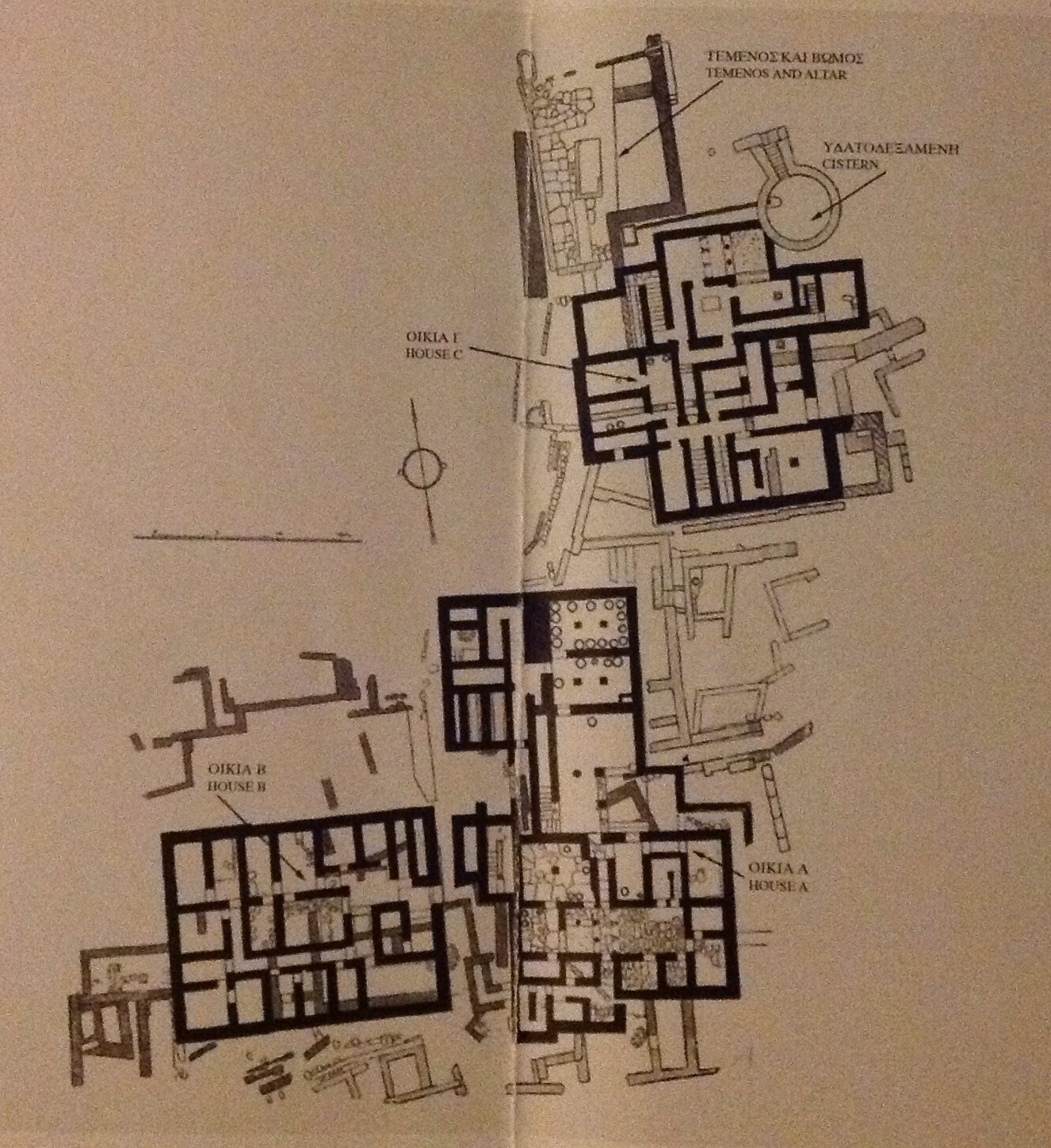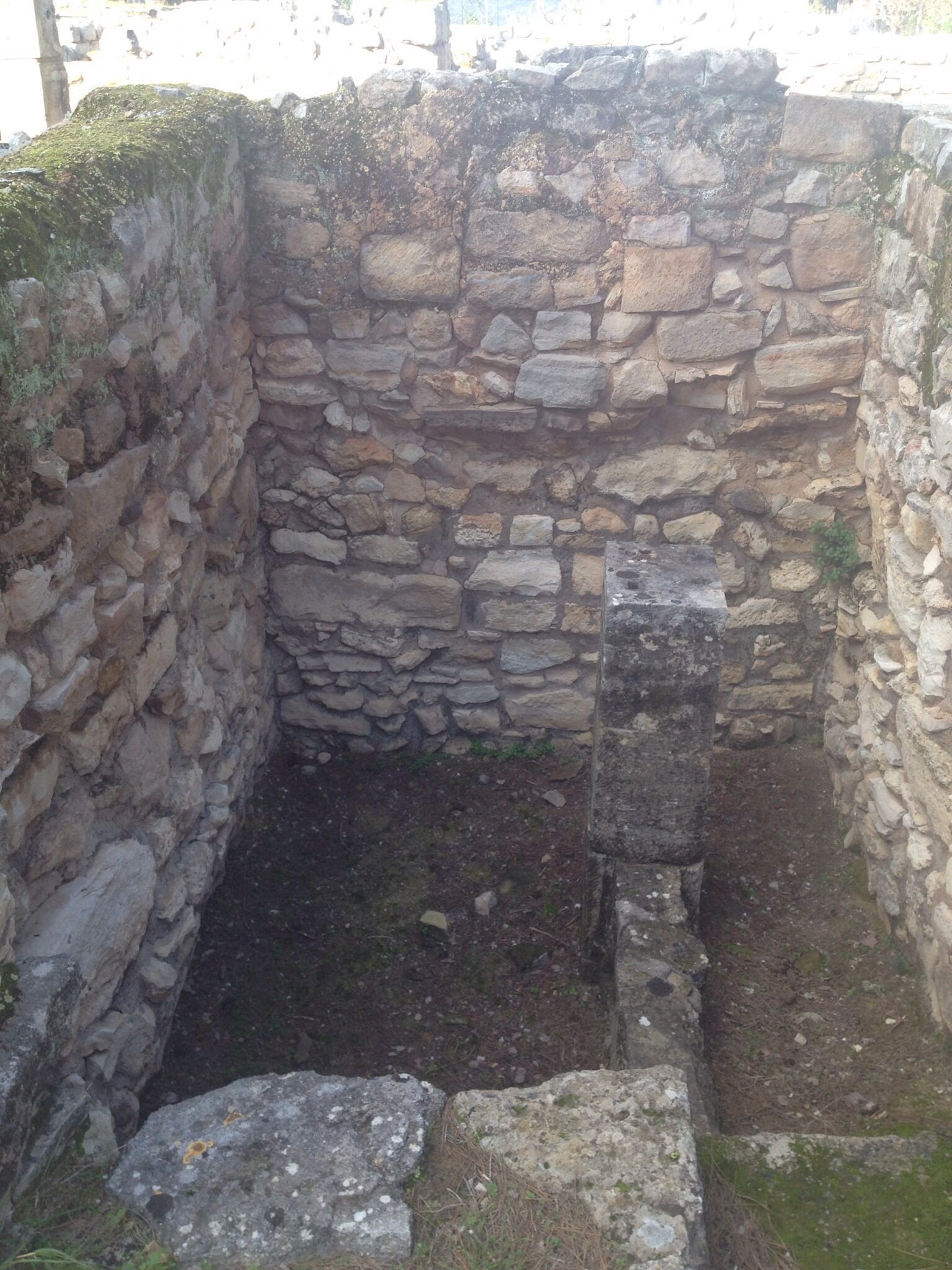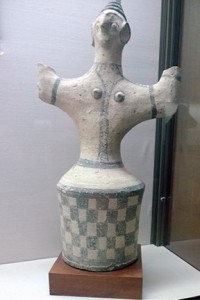We spent the afternoon of January 17th in a potter’s workshop located outside of the Knossos archaeological site. The Spirit of Greece is run by Vassilis Politakis, who has officially been in this business since 1990, but comes from a family of ceramic artists. Vassilis specializes in recreating the pottery of the Aegean and Cypriot Bronze Age, focusing his talents mainly on the shapes and decorative techniques of the time of the Minoan palaces.
Our session with Vassilis started out with a brief chemistry lesson, during which he explained how clay is created, and how combining different metal oxides and organic matter into the original form can result in various colors and provide the clay with plasticity. The resulting clay is then kneaded and set upon a wheel to be thrown into the desired shape. The potter’s wheel was ‘revolutionized’ in ancient Greece around 1950 BC, and it consisted of a large ceramic disc that rotates atop a vertical wooden. The wheel was kept in motion entirely by the potter’s assistant, unless fitted with a piece for the potter to kick it into motion.
After explaining the process of creating the base of the pottery, Vassilis theatrically demonstrated how painted designs take a black or red color, using the same pigment material. Vassilis has a background in puppetry and theater, and he created five main characters to explain the three basic steps of firing. First off, red dirt containing traces of iron is mixed in with the ashes of wood and water to create a red paste that is consequently used to the draw figures on the pottery. The decorated pottery is then placed into a kiln, and is exposed to air that passes through the vent, changing the color of the base clay from its original grey to the red we see in its final form. This is the first step of firing, also known as oxidization. The second step, the reducing phase, consists of depriving the kiln of oxygen, forcing the production of carbon monoxide in place of carbon dioxide. This reaction changes the color of the entire pottery to black. The thirds and final step is re-oxidizing, allowing oxygen to flow back inside the kiln. The pottery absorbs this oxygen, allowing it to revert back to its red color, and the areas that are decorated stay black because the sintered surface was no longer able to absorb oxygen on account of the presences of the ashes.
Below are the characters that Vassilis used to theatrically explain to us the process of firing described above.

(From left to right: Mr. Fumes, Black-Iron Man, Ms. Ashes, Red-Iron Man, and Mr. Wind)
Clay can only exhibit permanent physical and chemical changes when fired in a kiln, after which it converts to its final ceramic form. The firing of the clay can reach temperatures of approximately 1150 degrees Celsius. Interestingly, the entire black figure process is reversible, if the pottery is inserted into a kiln that is hotter than 1150 degrees.
Creating pottery is a fascinating process, and I find it extremely interesting to note that the potters of the past did not have a the same knowledge of chemistry that we do now, nor any tools which measure and control temperature. Their entire work was basically trial and error, and one must appreciate their ability to create the beautiful pieces that we have recovered today.



